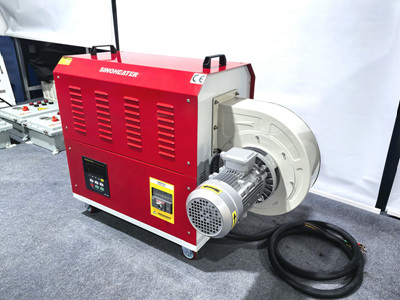Selecting a Heat Blower for High-Temperature Radiation Environments: Essential Safety and Protection Features
Operating a heat blower in environments with intense thermal radiation demands careful consideration of its protective capabilities. Prolonged exposure to high temperatures can degrade materials, compromise performance, and pose safety risks. Below are critical factors to evaluate when assessing a heat blower’s suitability for such conditions.
Thermal Insulation and Heat-Resistant Materials
The construction of the heat blower’s housing and internal components must withstand sustained high temperatures. Look for models featuring reinforced insulation around the motor, heating elements, and electrical connections. Materials like ceramic-coated casings or flame-retardant polymers can prevent heat transfer to sensitive parts, reducing the risk of malfunction or fire hazards. Additionally, check if the exterior remains cool to the touch during operation, as this indicates effective thermal management.
Radiation Shielding and Directional Control
In environments with direct thermal radiation, the heat blower should include shielding to protect its internal mechanisms. Reflective coatings or angled designs can deflect radiant heat away from critical components. Directional airflow control is equally important—adjustable vents or louvers allow users to direct heated air precisely without exposing the unit to excessive ambient heat. This feature also helps maintain consistent performance by preventing overheating of the blower’s core systems.
Overheat Protection Mechanisms
Automatic safety features are non-negotiable in high-radiation settings. Thermal cutoffs, which shut off the device if internal temperatures exceed safe limits, are essential for preventing damage. Some models incorporate dual sensors to monitor both air intake and exhaust temperatures, ensuring comprehensive protection. Additionally, resettable thermal fuses or self-regulating heating elements can enhance reliability by reducing the need for manual intervention during prolonged use.
Airflow Efficiency and Cooling Systems
Effective airflow design helps dissipate heat generated by both the blower and its surroundings. High-velocity fans or dual-fan configurations can improve ventilation, preventing hotspots within the unit. For industrial applications, consider models with dedicated cooling channels or external air intakes that draw in cooler ambient air. This not only extends the lifespan of the device but also maintains optimal performance in extreme conditions.
Corrosion and Chemical Resistance
High-temperature environments often coincide with corrosive substances or airborne particles. The heat blower’s materials should resist oxidation, chemical degradation, and abrasion. Stainless steel components or epoxy-coated finishes are ideal for withstanding harsh conditions without compromising structural integrity. If the setting involves combustible dust or fumes, ensure the unit meets explosion-proof standards to avoid ignition risks.
Certifications and Compliance with Safety Standards
Verify that the heat blower adheres to industry-specific safety certifications, such as UL, CE, or ATEX ratings for hazardous locations. These certifications confirm that the device has undergone rigorous testing for thermal stability, electrical safety, and emission control. Compliance with local regulations ensures the blower is legally permitted for use in high-radiation environments, protecting both operators and facilities.
By prioritizing these features, buyers can select a heat blower capable of maintaining performance and safety in challenging thermal conditions. Proper evaluation of materials, protection systems, and certifications will minimize downtime, reduce maintenance costs, and ensure long-term reliability.



